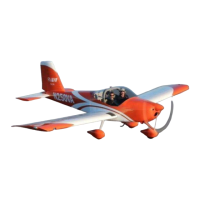Rev. 5
3-12
• Use a straight edge to check that the unloaded gear-leg is straight, between the
factory bends.
• Inspect the condition of fasteners and cotter pins, and the condition of attach
locations at the nose fork pivot point and the three wheel axles.
• Inspect the tires for cracks, wear, and tire pressure. Valve and valve stem in good
condition, and capped.
• Check the nose gear-leg coating, welds, and brackets for cracks and signs of
fatigue.
• Check nose fork pivot point for lubrication.
• Check the nose fork, nut and cotter pin for condition and signs of fatigue.
WING / CENTER SECTION
♦
♦ Flashlight
♦ Inspection mirror
♦ Wing retention
♦
♦ Straight edge
♦ Multi-meter
• Inspect the wing skins and fasteners for signs of damage or deformation. Check the
fasteners by sighting down each rivet pattern for any inconsistent rivet profile among
properly installed rivets. Any damage observed on the wing skins demands thorough
inspection of the understructure of the damaged wing.
• Use a flashlight and an inspection mirror to inspect spars, ribs and attach angles on
the interior of each wing. Especially the inboard-most ribs and ribs at the flaperon
hinge attach points. The aft outboard portion of the wings can be viewed through
the lightening holes in the outboard portion of the rear spar.
• Inspect the main spar, rear spar and stub spar for corrosion, deformation, signs of
wear or fatigue. Inspect the rear spar and stub spar for lubrication at the inboard
end.
• Inspect the flaperon condition and operation. Inspect the flaperon skins and
fasteners for damage or deformation. The flaperon must swing smoothly without free
play in any direction. Inspect the flaperon control connection for signs of wear.
Check the fasteners in the flaperon hinge brackets on each wing for security. Inspect
inner surface of flaperon torque tubes for rust and corrosion.
• Inspect the condition of the electrical connections that correspond to the fuselage.
The connections must be free of corrosion and damage.
• Test the stall warning Vane for freedom of movement. Check the micro-switch for
corrosion, condition and security. Check the wing skin for cracks around the stall
warning vane penetration.
• Test the AOA system plumbing for leaks. See the AOA System Test section below.

